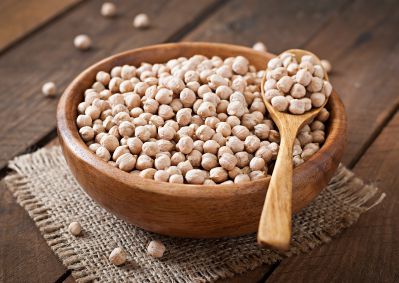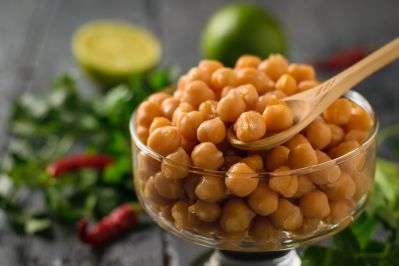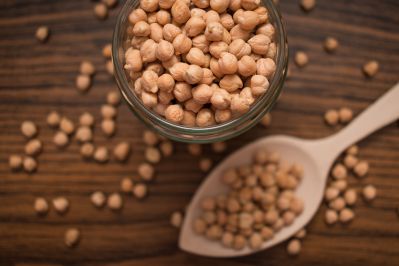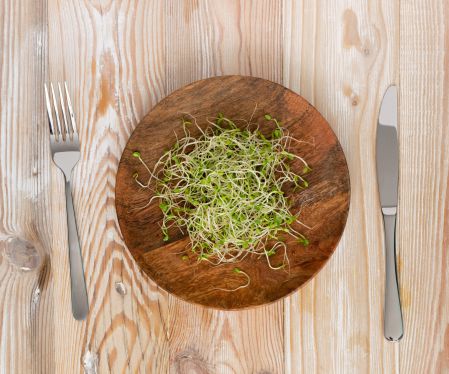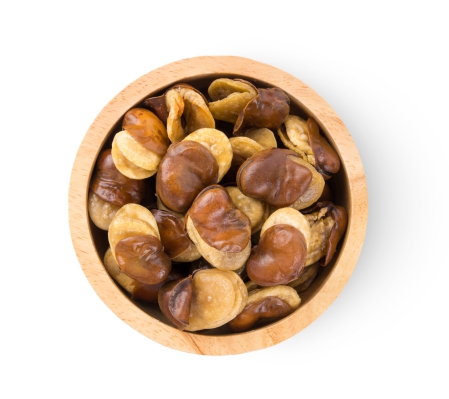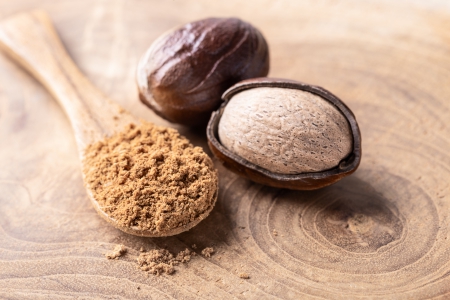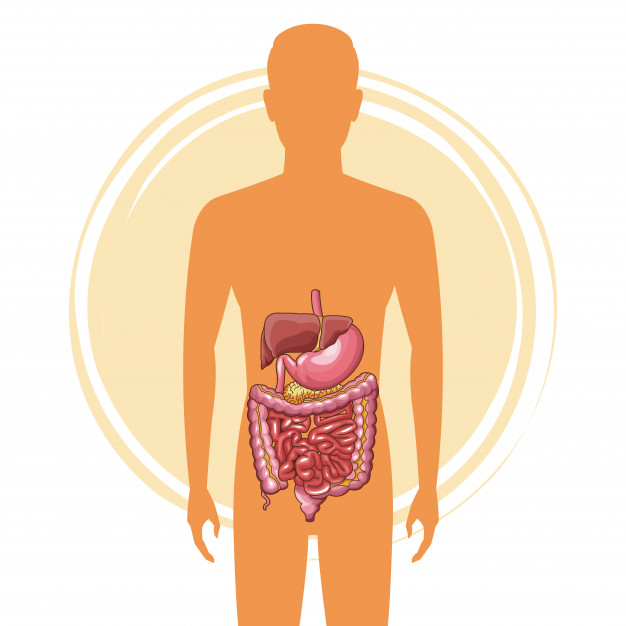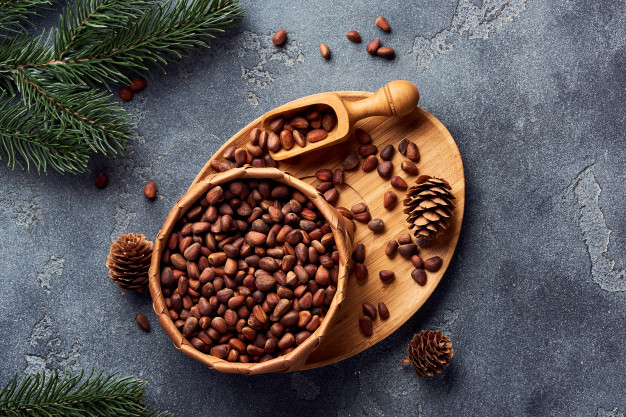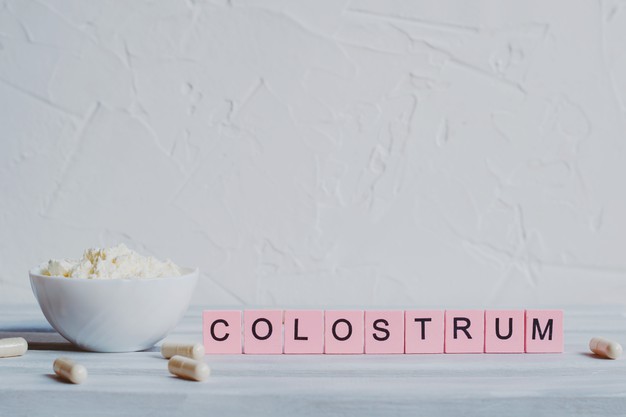Chickpea is an important legume belongs to Fabaceae family. It is considered as one of the most important source of plant protein and serves several important functions within body.
Nutritional overview
- It is considered as a good source of protein and contains various important amino acids like leucine, isoleucine, lysine, cystine, methionine, valine, phenylalanine, tryptophan etc.
- It contains desirable amount of carbohydrate as well as fibre
- In contains both saturated and unsaturated fatty acid but absolutely free from cholesterol
- It contains various vitamins like Vitamin A, Vitamin C, Vitamin E, Vitamin K, thiamin, riboflavin, niacin, pantothenic acid, folic acid, cyanocobalamin and choline among which it is significantly rich in folic acid (it contains about 70% of folic acid)
- It also contains several trace elements such as calcium, phosphorus, zinc, magnesium, manganese, iron, copper, potassium and selenium
Anti-nutritional factors and their consequences
Anti-nutritional factors are those factors of foods, which interfere with nutrient absorption and utilization. Chickpea contains various anti-nutritional factors.
Below table will show the anti-nutritional factors and their consequences in human body –
| Anti-nutritional factors | Consequences |
| Protease inhibitor | Interfere with protein digestion by inhibiting the activity of the enzyme protease |
| Amylase inhibitor | Impaired carbohydrate digestion and metabolism by inhibiting the activity of amylase enzyme (carbohydrate spiting enzyme) |
| Phytolectins | Nausea, vomiting, diarrhea and clumping of red blood cell together |
Health benefits
Role on digestive health
- Starch component of chickpea helps in digestion
- Its fibre content is associated with inhibiting constipation and also helps to promote the regularity
- It also helps to increase bowel movement as well as peristalsis, which help to improve intestinal health
- It helps to reduce the load of unhealthy bacteria from intestine and helps to prevent gastrointestinal disturbances
Role on skeletal system
- Consumption of chickpea is extremely helpful for the growth and development of bone as it contains significant amount of calcium as well as phosphorus (structural components of bone)
- Its magnesium content also helps in bone development
- Vitamin K, manganese and zinc components of chickpea help to maintain the structure of bone
- It helps to improve bone mineral density as well as reduces the risk of developing bone related disorders and bone fractures
- Vitamin C content of chickpea is responsible for collagen synthesis that plays significant role in promoting the health of bone and cartilage

Role on nervous system
- Choline component of chickpea is responsible for improving the functions of brain
- It helps to improve mood, memory, cognitive and learning ability
- It helps to reduce the risk of developing neurological disorders
Role on weight management
- Its fibre content is exceptionally useful for reducing body weight as it helps to increase the catabolic rate of the body that enhances the rate of calorie expenditure
- It helps to decrease the biosynthesis of fatty acid
- It also helps to provide a feeling of satiety and reduces over feeding, which facilitates weight reduction
Role on maternal health
- Consumption of chickpea during pregnancy is very beneficial due to its folic acid content. It helps to support the growth and development of growing fetus as well as helps to prevent the risk of developing neural tube defects
- Inadequate consumption of folic acid during pregnancy is associated with increasing the risk of preterm infants, low birth weight baby, maternal infections and congenital anomalies. It also causes severe anemia in mothers. To prevent all of these complications folic acid should be consumed (as per recommendation), which can partially achieve by consuming chickpea
- Other nutritional contents of chickpea like calcium, iron, protein, fibre play significant role in improving maternal health

Anti-carcinogenic activities
- Consumption of chickpea is related with reducing the susceptibility of developing cancers
- Its selenium content helps the liver to detoxify cancer causing compounds from body and helps to suppress the growth of tumor
- Its folic acid content is responsible for reducing the synthesis of cancer cell by preventing DNA mutation (it also enhances DNA synthesis and repairing)
- Fibre content of chickpea is accountable for decreasing the prevalence of colorectal cancer
- Isoflavones component of chickpea is also associated with reducing the risk of breast cancer
- Chickpea contains saponin (an important phytochemical), which exerts strong anti-carcinogenic activities by inhibiting multiplication and proliferation of DNA
Anti-inflammatory activities
- It helps to prevent inflammation, swelling and pain
- Its consumption can reduce the risk of developing various chronic diseases as it successfully inhibits the inflammatory events of body
Role on eye
- Beta carotene and zinc components of chickpea play important role in improving vision and eye health
- It also facilitates the transportation of Vitamin A from liver to retina
- It helps to decrease the prevalence of corneal xerosis, bitot’s spot, xerophthalmia and keratomalacia
- It also decreases the progression of macular degeneration

Role on skin
- It helps to improve skin health by providing proper nourishment to the skin
- It helps to reduce wrinkles
- It also helps to prevent ageing
- It acts as an effective cleanser
Role on hair
- Chickpea promotes hair growth as it is rich in protein. Its protein content is responsible for synthesizing keratin that stimulates hair growth
- Manganese content of chickpea is responsible for enhancing hair strength
- Zinc content of chickpea helps to prevent the thinning of hair
- Its copper content is responsible for re-growing of hair hence its consumption is very advantageous for those individuals who lost their hair due to chemotherapy
- It also helps to reduce dandruff
Therapeutic applications
Effect on cholesterol level
- It is widely used as an effective preventive measure for hypercholesterolemia
- It helps to reduce the concentration of LDL, triglyceride and VLDL
- It also helps to increase HDL concentration that helps to carry the bad cholesterol (LDL) back to liver and liver flushes it out from body
- It helps to maintain normal HDL, LDL ratio that helps to reduce the prevalence of atherosclerosis and promotes cardiac health

Effects on Heart
- It is extensively used for improving cardiac functions
- Its potassium and fibre content help in improving cardiac health
- Its anti-inflammatory effects help to reduce cardiac inflammatory events and reduce the risk of developing coronary artery disease
- It is very beneficial for improving health of the arteries by removing plaque from arteries and promotes blood circulation
- It also used for reducing hypertension
Diabetes
- It is one of the most useful food stuffs, which should be consumed by diabetic patients as its consumption does not increase glycemic load
- Its fibre content also helps to decrease blood sugar concentration by reducing glucose absorption from intestinal epithelial cell
- It is better to consume chickpea in the place of wheat as it helps to reduce postprandial blood sugar level that helps to reduce the risk of hyperglycemia
It is also very useful for preventing anemia as it contains significant amount of iron and folic acid, which helps in the synthesis of hemoglobin
Guideline for cooking methods
Before consuming chickpeas, it is better to boil the raw chickpeas for few minutes followed by soaking in cool water. Then it should be sundried. This processing would help to reduce the concentration of anti-nutritional factors or toxins from chickpeas.

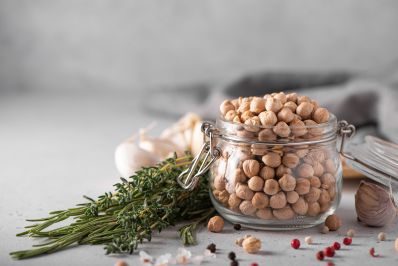
Source:
Bar-El Dadon, S., Abbo, S. and Reifen, R., 2017. Leveraging traditional crops for better nutrition and health-The case of chickpea. Trends in Food Science & Technology, 64, pp.39-47.
Faridy, J.C.M., Stephanie, C.G.M., Gabriela, M.M.O. and Cristian, J.M., 2020. Biological Activities of Chickpea in Human Health (Cicer arietinum L.). A Review. Plant Foods for Human Nutrition, pp.1-12.
Gupta, R.K., Gupta, K., Sharma, A., Das, M., Ansari, I.A. and Dwivedi, P.D., 2017. Health risks and benefits of chickpea (Cicer arietinum) consumption. Journal of agricultural and food chemistry, 65(1), pp.6-22.
Santos, T., Marinho, C., Freitas, M., Santos, H.M., Oppolzer, D., Barros, A., Carnide, V. and Igrejas, G., 2017. Unravelling the nutriproteomics of chickpea (Cicer arietinum) seeds. Crop and Pasture Science, 68(11), pp.1041-1051.
Sofi, S.A., Muzaffar, K., Ashraf, S., Gupta, I. and Mir, S.A., 2020. Chickpea. In Pulses (pp. 55-76). Springer, Cham.
Summo, C., De Angelis, D., Ricciardi, L., Caponio, F., Lotti, C., Pavan, S. and Pasqualone, A., 2019. Nutritional, physico-chemical and functional characterization of a global chickpea collection. Journal of Food Composition and Analysis, 84, p.103306.
Wallace, T.C., Murray, R. and Zelman, K.M., 2016. The nutritional value and health benefits of chickpeas and hummus. Nutrients, 8(12), p.766.
